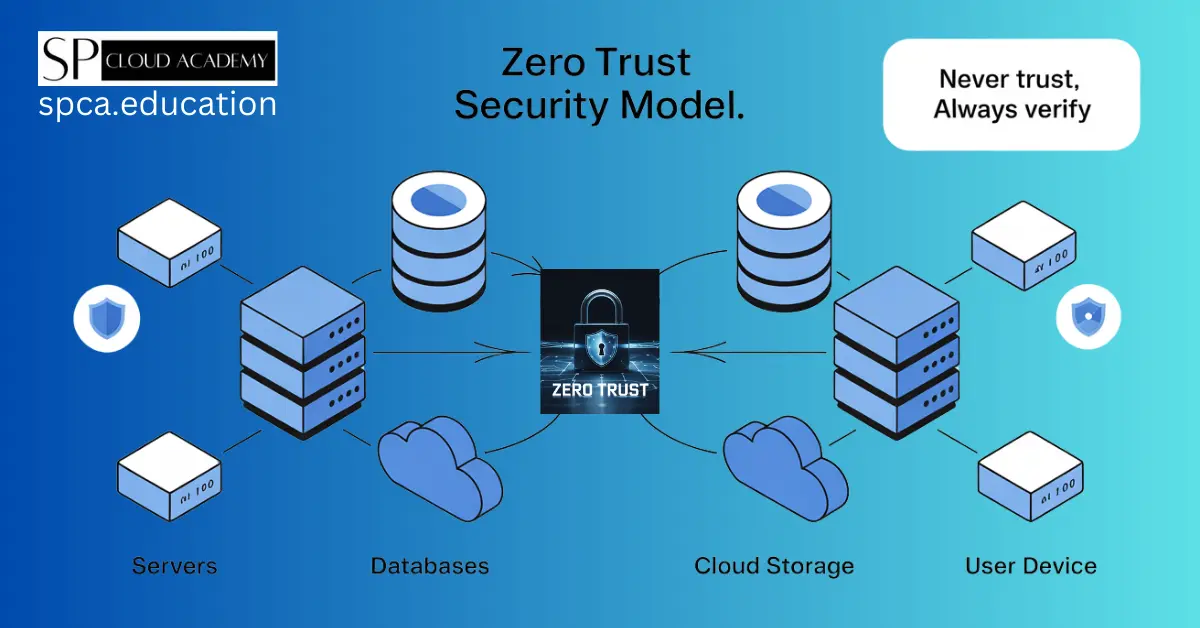1. Introduction
In our interconnected digital landscape, cybersecurity has never been more critical. Every organization, government agency, and individual relies on robust security measures to protect sensitive data from evolving cyber threats. Penetration testing—a proactive, simulated cyberattack—has emerged as an indispensable methodology for identifying vulnerabilities within networks, applications, and systems before malicious actors can exploit them.
This guide, entitled “Mastering Penetration Testing: A Complete Guide for Beginners and Professionals”, is designed to unleash your potential as a cybersecurity practitioner. Whether you’re just embarking on your ethical hacking journey or are looking to refine and expand your current skills, this article offers actionable insights, best practices, and in-depth analysis on ethical penetration testing. As you progress through this guide, you’ll develop a robust understanding of how to plan, execute, and report on penetration tests while adhering to ethical and legal standards.
Our ultimate aim is to empower you to detect cyber vulnerabilities efficiently, safeguard your digital assets, and ultimately justify your role not only as a defender of information but also as a proactive security strategist. Now, let’s unravel the layers of penetration testing and set you on a path to cybersecurity mastery!
2. Understanding Penetration Testing
Penetration testing, along with its cousin term ethical hacking, is a simulated cyberattack on a computer system, network, or web application. The purpose is to evaluate its security weaknesses in a controlled, safe environment. Here are the fundamental aspects:
What Is Penetration Testing?
At its core, penetration testing is the practice of simulating attacks that hackers might use. This testing exposes system vulnerabilities before an actual attacker does, ensuring the organization’s cybersecurity defenses are robust and reliable. It involves identifying, evaluating, and mitigating security weaknesses by exploiting them—just like a real-world attacker—in a legal and ethical manner.
Why It Matters
Penetration testing is critical for several reasons:
- Risk Identification: It pinpoints vulnerabilities and helps organizations assess the real risk they face.
- Compliance: Many regulatory frameworks require regular penetration tests to maintain compliance, whether for HIPAA, PCI-DSS, or GDPR.
- Prevention: Regular testing helps businesses mitigate vulnerabilities before malicious hackers exploit them.
- Continuous Improvement: Post-assessment, organizations can fine-tune their security protocols, reducing the potential for successful cyberattacks.
The Difference Between Ethical Hacking and Malicious Hacking
A key element in penetration testing involves ethics: ethical hackers or penetration testers use the same tools and techniques as malicious hackers. However, they operate under strict legal guidelines and with the explicit permission of the system owner. Ethical hacking, therefore, transforms potentially dangerous activities into a positive, defensive exercise that helps organizations patch security gaps and protect valuable data.
Understanding these fundamentals sets the stage for a deeper exploration, and as we move forward, you’ll see that mastery in penetration testing lies in both technical expertise and an ethical mindset.
3. The Importance of Penetration Testing in Cybersecurity
With the exponential growth of cyber threats, penetration testing is no longer a “nice-to-have” but a mandatory component of any robust cybersecurity strategy. Here’s why penetration testing is indispensable in today’s digital world:
Bolstering Cyber Resilience
Digital infrastructures and online assets face constant threats from an ever-growing list of adversaries. Penetration testing serves as the first line of defense by:
- Simulating Attacks: It provides a comprehensive look at where your systems can be exploited.
- Identifying Vulnerabilities: By actively probing your defenses, penetration testing reveals hidden gaps in your security architecture.
- Mapping Out Attack Vectors: Understanding how a hacker might gain entry is the cornerstone of formulating robust countermeasures.
Enforcing Compliance and Best Practices
For many sectors—especially those handling sensitive personal data—regulatory compliance is a must. Regular penetration tests ensure that compliance requirements are met and that your security protocols are up-to-date with the latest standards.
Saving Money in the Long Run
Investing in regular penetration testing can save an organization millions by preemptively identifying and mitigating vulnerabilities that could otherwise lead to catastrophic financial losses in the event of a breach or costly legal consequences.
Providing Business Assurance
For businesses, knowing that you’ve extensively tested your defenses instills confidence among stakeholders, partners, and customers. It demonstrates that you take security seriously and have proactive measures in place to safeguard critical assets.
The strategic implementation and continual refinement of penetration testing protocols have become an integral part of any effective cybersecurity framework, making it an essential topic for beginners and professionals alike.
4. Types of Penetration Testing
Penetration testing is a vast and multifaceted discipline. Different tests target various aspects of an organization’s digital and even physical security. Below are the main types:
Network Penetration Testing
Network penetration testing focuses on identifying vulnerabilities within network infrastructure—such as routers, switches, firewalls, and servers. In today’s digital world, networks form the backbone of all communications, so identifying security loopholes is critical.
- External Network Testing: Targets public-facing systems and servers accessible over the internet.
- Internal Network Testing: Simulates insider threats and unauthorized access from within the organization.
Web Application Testing
With the rising dominance of web-based applications, web application penetration testing has become vital. It scrutinizes web apps for vulnerabilities like SQL injection, cross-site scripting (XSS), and remote code execution vulnerabilities. Web testing often includes:
- Input Validation Testing: Ensuring all user inputs are sanitized.
- Authentication Testing: Evaluating the strength of login mechanisms and multi-factor authentication.
- Session Management: Verifying the integrity of user session data.
The Wireless Network Penetration Testing
Wireless networks come with their own sets of challenges. Wireless penetration testing aims to identify vulnerabilities within Wi-Fi protocols, encryption weaknesses (such as WEP, WPA, WPA2), and unauthorized wireless access points. This helps organizations secure their wireless communications.
Social Engineering
Social engineering isn’t about complex algorithms but exploits human psychology. In a social engineering test, penetration testers attempt to trick employees into divulging sensitive information or compromising security via phishing emails, pretexting, or even physical manipulation.
Physical Security Testing
Though often overlooked, physical penetration testing involves assessing the physical security measures that protect the hardware, facilities, and sensitive areas from unauthorized access. This might include lock-picking, evaluating surveillance systems, and testing access controls.
Each type of penetration test employs a specialized methodology and set of tools tailored to its unique objectives. For a robust security posture, organizations often combine several testing methods to cover all potential vulnerabilities. The next sections will delve deeper into the penetration testing process, ensuring you gain a holistic understanding of both methodology and practice.
5. The Penetration Testing Process
A successful penetration test is not an accident—it’s the result of meticulous planning and sequential execution following a clearly defined process. Most penetration tests follow a structured methodology that includes these key phases:
Planning and Reconnaissance
The Objective-Setting Phase: Before any testing begins, it’s crucial to define the scope. This includes determining which systems to test, what methods to use, and the goals of the test. The planning stage lays down the legal groundwork, ensuring that the testers have explicit permission and that actions are documented.
Reconnaissance: Reconnaissance, or “recon,” gathers as much information as possible about the target environment. This phase usually employs both passive (using publicly available information) and active techniques (such as scanning the network for open ports). Techniques include:
- DNS Enumeration: Identifying domain details and associated subdomains.
- WHOIS Lookup: Providing registration details.
- Social Media Profiling: Collecting data from employee profiles for potential entry points.
The more information gathered during recon, the more targeted the subsequent tests will be—allowing the tester to simulate real-world attack scenarios more accurately.
Scanning and Enumeration
Scanning: Post-recon, testers move on to actively scanning systems to identify live hosts, open ports, and services running on those ports. Tools such as Nmap and Nessus come in handy. Scanning provides a snapshot of potential vulnerabilities, and often this phase also includes identifying the operating systems and versions in use.
Enumeration: Once potential avenues are identified, the tester digs into the specifics by enumerating user accounts, services, shares, and resources on the network. This phase transforms raw data from the scanning process into actionable intelligence that determines which vulnerabilities may be exploited.
Gaining Access
Exploitation: With a wealth of information in hand, the tester now attempts to exploit one or more vulnerabilities to gain unauthorized access. Tools like Metasploit streamline this process by providing a suite of exploits and payloads. The goal is to verify the existence of security flaws and demonstrate how they can be leveraged.
Privilege Escalation: After initial access, testers often attempt to move laterally within the system or escalate their privileges. Effective privilege escalation techniques can reveal additional hidden vulnerabilities that might endanger an entire network if left unaddressed.
Maintaining Access
Establishing Persistence: In a real-world scenario, a persistent attacker seeks to maintain access to the network even after the initial vulnerability is patched. In this phase, testers evaluate how well the security mechanisms prevent long-term unauthorized access. Techniques might include setting up backdoors or installing rootkits in a controlled and documented environment.
Determining the Extent of the Breach: This step also involves assessing the network’s ability to detect and respond to an ongoing attack. The insights gleaned here are invaluable for forming a robust defense strategy.
Analysis and Reporting
Comprehensive Reporting: Once testing is complete, all findings—both successful exploits and vulnerabilities that could not be exploited—are compiled into a detailed report. This report is an essential deliverable that includes:
- An executive summary for non-technical stakeholders.
- Detailed technical findings with step-by-step reproduction instructions.
- Exploited vulnerabilities, example payloads, and screenshots.
- Clear recommendations and remediation strategies.
Actionable Insights: The final report not only outlines what went wrong but also offers a roadmap for how to repair vulnerabilities, making it a vital document for both IT security teams and management.
A systematic penetration testing process ensures that every facet of the target system is scrutinized for vulnerabilities. This structured approach guarantees that nothing is overlooked and that the findings lead to actionable and measurable improvements in cybersecurity.
6. Essential Tools and Techniques
The world of penetration testing is powered by an impressive array of tools that assist both beginners and professionals. These tools range from network scanners to comprehensive frameworks designed for vulnerability analysis.
Popular Penetration Testing Tools
Below is a table summarizing some of the most widely-used tools in the industry:
| Tool Name | Usage | Key Features |
|---|---|---|
| Nmap | Network scanning and host discovery | Fast scanning, OS detection, scriptable through the Nmap Scripting Engine (NSE). |
| Metasploit | Exploitation framework for vulnerability research | Large collection of exploits, payloads, and auxiliary tools. |
| Wireshark | Network protocol analysis | Packet capturing, deep protocol inspection, filtering options. |
| Burp Suite | Web application security testing | Automated crawling, vulnerability scanning, manual testing tools. |
| Nessus | Vulnerability scanning across multiple systems | Comprehensive vulnerability assessments, reporting, and compliance checks. |
| John the Ripper | Password cracking tool used in brute-force attack scenarios | Supports a range of corrupted password hashes, robust and adaptable. |
| Aircrack-ng | Wireless network security testing | Monitoring, attacking, testing, and cracking Wi-Fi networks, particularly WPA/WPA2. |
Each tool is designed for specific facets of the testing process—from initial reconnaissance with Nmap to deep-dive analysis with Wireshark and exploit simulations using Metasploit. Knowing when and how to use these tools is as crucial as understanding the underlying techniques behind their design.
Common Techniques in Penetration Testing
Vulnerability Scanning: Automated tools like Nessus and OpenVAS rapidly scan systems to identify potential vulnerabilities. These scans are often the starting point for a more detailed manual investigation.
Exploit Development and Use: Writing or modifying existing code to exploit a vulnerability is a core skill for penetration testers. The Metasploit framework, for example, is not only a repository of known exploits but also a platform to develop new ones.
Password Cracking: Techniques such as brute-forcing, dictionary attacks, and rainbow table lookups are essential when testing the strength of password security. Tools like John the Ripper and Hashcat are industry standards for this task.
Social Engineering Methods: As part of a penetration test, techniques such as phishing or pretexting can reveal human errors—often the weakest link in the cybersecurity chain. Even small lapses in judgment by an employee can lead to significant vulnerabilities.
Bypassing Security Controls: An advanced tester will try to bypass firewalls, intrusion detection systems (IDS), and antivirus software to assess the overall resilience of a network. Techniques may include obfuscation, encrypted payloads, or leveraging known protocol weaknesses.
Implementing these tools and techniques during a penetration test ensures a comprehensive evaluation of your network’s robustness and greatly assists in identifying weak points that require the most urgent attention.
7. Legal and Ethical Considerations
Penetration testing is an inherently sensitive activity that sits at the intersection of technical innovation and legal boundaries. Whether you’re a beginner or a professional, understanding the legal landscape and ethical considerations is paramount.
Legal Framework
Before performing any penetration test, explicit written permission is imperative. Operating without authorization can result in severe legal consequences, including criminal charges. Some critical legal considerations include:
- Scope of Engagement: Define what systems, networks, and applications fall under the testing regime. This ensures that the work remains within safe boundaries.
- Rules of Engagement: Establish protocols regarding the attack techniques to be used, the timing of tests, and how to handle unexpected findings.
- Liability and Disclaimers: Both the testing team and the organization should agree upon liability clauses that protect them from legal repercussions in the event of accidental service interruptions or unforeseen damage.
Ethical Standards
Ethical hacking is built on integrity and responsibility. Maintaining trust is key.
- Confidentiality: All data gathered during penetration testing should remain confidential. Often, testers are required to sign non-disclosure agreements (NDAs) with their clients.
- Minimizing Harm: A penetration test should be conducted in a manner that minimizes disruption to the organization’s day-to-day operations. The goal is to secure, not to harm.
- Transparency in Reporting: The methodologies, findings, and recommendations must be documented in detail and communicated clearly to all relevant stakeholders.
Demonstrating respect for legal and ethical considerations not only protects you as a tester but also reinforces the trust between the penetration testing organization and its clients.
8. Building a Career in Penetration Testing
Whether you are an IT professional looking to transition into cybersecurity or a newcomer aspiring to enter the field of ethical hacking, forging a career in penetration testing is both challenging and rewarding.
Essential Skills and Knowledge Areas
To excel in penetration testing, you need a well-rounded skill set that includes:
- Technical Proficiency: An in-depth understanding of network protocols, operating systems, and application architectures.
- Programming and Scripting: Knowledge of programming languages such as Python, Ruby, or even C can be a game changer. Knowing how to write scripts for automation or custom exploit development is invaluable.
- Understanding Vulnerabilities: Familiarity with common vulnerabilities (like those listed in the OWASP Top 10) and how they can be exploited or mitigated.
- Analytical Thinking: Beyond just technical knowledge, a penetration tester must be able to think like a hacker. This “outside-the-box” thinking is what drives effective vulnerability hunting.
Recommended Certifications and Courses
Earning industry-recognized certifications can bolster your credibility. Popular certifications include:
- Certified Ethical Hacker (CEH): Focuses on the fundamentals of ethical hacking and penetration testing methodologies.
- Offensive Security Certified Professional (OSCP): Known for its hands-on, practical approach, the OSCP is highly respected among penetration testers.
- GIAC Penetration Tester (GPEN): Focuses on technical issues, including vulnerability scanning and exploitation.
Career Path Options
Penetration testers can explore a variety of career paths:
- In-house Security Teams: Many large organizations employ dedicated teams to perform regular penetration tests.
- Security Consulting Firms: Working as a consultant allows you to work on a variety of projects across different sectors.
- Bug Bounty Programs: Several organizations run bug bounty programs where independent penetration testers earn rewards for identifying vulnerabilities.
Continuous Learning
Cybersecurity is a rapidly evolving field. To stay ahead:
- Attend Conferences: Participate in cybersecurity conferences such as DEF CON, Black Hat, and BSides to learn about emerging trends.
- Join Communities: Engage with online security forums, subreddits, and local meetups to share knowledge and gain insights from peers.
- Practice Regularly: Use platforms like Hack The Box, TryHackMe, or build a home lab to test your skills against new challenges.
9. Real-world Penetration Testing Case Studies
Understanding theoretical concepts is crucial, but real-world case studies bring penetration testing to life. Below are a few detailed case studies that highlight the impact of ethical hacking in action.
Case Study 1: Banking Sector Vulnerability
Scenario: A mid-sized bank engaged a penetration testing firm to uncover vulnerabilities in its online banking system. Their scope covered everything from the customer login interface to internal database security.
Findings and Impact:
- SQL Injection Vulnerabilities: The tester exploited flaws in the bank’s web application that allowed them to inject SQL commands, retrieve sensitive information, and bypass authentication.
- Misconfigured Firewalls: Certain sections of the network were loosely configured, giving unauthorized users potential pass-through access.
Outcome: Following detailed analysis and a comprehensive report, the bank overhauled its security protocols, implemented more rigorous firewall rules, and invested in employee security training. As a result, the bank’s overall risk exposure was significantly reduced.
Case Study 2: Social Engineering in Healthcare
Scenario: In another case study involving a large healthcare provider, penetration testers were tasked with evaluating the organization’s human element. They simulated a phishing campaign targeting healthcare employees.
Findings and Impact:
- Phishing Success Rate: A significant portion of employees fell victim to the phishing attacks, revealing weak internal practices such as shared passwords and a lack of multi-factor authentication.
- Data Exposure: Sensitive patient data was nearly compromised due to inadequate security awareness among staff.
Outcome: The healthcare provider implemented mandatory security training, switched to more secure communication protocols, and introduced regular simulated phishing exercises to keep employees vigilant.
Case Study 3: Wireless Network Exploit in Retail
Scenario: A leading retail chain contracted penetration testers to assess its wireless network infrastructure, which included public and in-store Wi-Fi systems.
Findings and Impact:
- Outdated Encryption Protocols: Several wireless access points operated on legacy encryption protocols, making them susceptible to interception.
- Unauthorized Access Points: The testers discovered rogue Wi-Fi hotspots set up near store entrances, potentially facilitating man-in-the-middle attacks.
Outcome: The retail chain promptly upgraded its network infrastructure, replaced outdated systems, and implemented advanced monitoring solutions to detect and respond to rogue devices.
Each case study reinforces the critical role of penetration testing in identifying potential avenues of attack that conventional security scans might miss. These examples underline the value of practical, hands-on testing methodologies in safeguarding assets and protecting both organizational and customer data.
10. Overcoming Common Challenges and Pitfalls
While penetration testing holds the promise of robust cybersecurity, it is not without its challenges. Here we examine some common issues that testers encounter, along with strategies to overcome them.
Limited Scope and Undefined Boundaries
Challenge: Penetration tests can fail if they are conducted with an overly narrow or undefined scope. This means potential vulnerabilities on untested systems or networks might remain hidden.
Strategies:
- Clear Scoping: Establish clear targets and define the boundaries of the test in detailed writing. Document what is allowed and what isn’t.
- Stakeholder Communication: Ensure that both technical and non-technical stakeholders understand and agree on the scope before testing begins.
Inadequate Documentation and Reporting
Challenge: Even if vulnerabilities are discovered, poor documentation can lead to misunderstandings by the client, preventing prompt and effective action.
Strategies:
- Comprehensive Reports: Use clear, structured documentation to record each finding. Include step-by-step explanations, evidence such as screenshots or logs, and recommendations.
- Standardized Formats: Adhere to industry-standard reporting templates that simplify understanding for both technical teams and management.
Evolving Threat Landscape
Challenge: Cyber threats evolve rapidly, meaning that what worked in a test last year might not address current vulnerabilities. This dynamic nature of security demands constant updating of methods and tools.
Strategies:
- Continuous Learning: Regularly update your skills with the latest penetration testing tools, exploits, and methodologies.
- Adopt Agile Practices: Incorporate continuous scanning and iterative testing cycles to stay abreast of emerging threats.
Balancing Disruption and Thoroughness
Challenge: Penetration testing in live environments can sometimes lead to unintended system disruptions, especially if aggressive testing methods are deployed.
Strategies:
- Test Environments: Whenever possible, simulate tests in a controlled environment that mirrors production.
- Risk Mitigation: Balance the need for thorough testing with the safe operation of critical systems. Use low-impact testing techniques and ensure that emergency response protocols are in place.
Addressing these challenges head-on will not only lead to more effective penetration tests but will also build trust with your clients or organization, enabling a more proactive security stance.
11. The Future of Penetration Testing
As cybersecurity threats continue to evolve, so too do the methods and technologies used in penetration testing. Here are some emerging trends and predictions for the future:
Integration of Artificial Intelligence and Machine Learning
AI-Driven Vulnerability Assessments: Artificial intelligence will increasingly assist in identifying potential vulnerabilities much faster than manual methods. Machine learning algorithms can recognize patterns that might hint at security weaknesses, thereby speeding up the testing process and reducing human error.
Cloud and Container Security Testing
Securing Cloud Infrastructures: With the widespread adoption of cloud services, penetration testing must now account for the complexities of multi-tenant environments. This includes revealing vulnerabilities in cloud configurations, APIs, and microservices.
Container Security: As organizations migrate to containerized applications, testing for misconfigurations and vulnerabilities in Docker, Kubernetes, and other container orchestration platforms becomes paramount.
Automated and Continuous Testing
Shift-Left Security: The integration of security practices into the development lifecycle—DevSecOps—is leading to continuous, automated testing. This allows vulnerabilities to be identified—and fixed—during development rather than post-deployment.
Advanced Exploitation Techniques
Zero-day Vulnerability Hunting: The search for zero-day vulnerabilities—previously unknown security flaws—will become more sophisticated as attackers evolve. As a defensive practice, organizations are expanding their penetration testing methods to predict and patch these unknown vulnerabilities.
Greater Emphasis on Ethical and Legal Aspects
Evolving Legal Frameworks: As governments impose stricter cybersecurity regulations, penetration testers must stay abreast of legislative changes. Compliance and ethical considerations will remain a cornerstone of ethical hacking.
The future of penetration testing is bright but complex. Embracing these advancements will require a continuous commitment to learning and agility, ensuring that your testing strategies are always one step ahead of cyber adversaries.

”Penetration Testing Demystified: A Hands-on Introduction and Practical Guide” offers clear explanations and practical exercises, making complex cybersecurity concepts accessible. It’s highly rated for its hands-on approach and real-world scenarios, providing valuable insights for both beginners and professionals.
#Cybersecurity #PenetrationTesting #EthicalHacking #InfoSec #HandsOnLearning
12. Conclusion and Next Steps
In today’s high-risk digital environment, mastering penetration testing is not just an option—it’s a necessity. Whether you’re a beginner eager to delve into cybersecurity or a professional striving to stay ahead of cutting-edge threats, the techniques and insights provided in this guide are designed to empower you.
Key Takeaways
- Understanding the Process: From reconnaissance to exploitation and reporting, every phase contributes to a comprehensive security posture.
- Tool Mastery: Familiarity with industry-standard tools, along with ongoing practice and education, is crucial.
- Ethical and Legal Compliance: Respecting the legal boundaries and ethical considerations is foundational to responsible penetration testing.
- Continuous Evolution: Cyber threats are ever-changing. Continual learning, adaptation, and the integration of modern technologies like AI and machine learning are essential.
- Business Impact: Effective penetration testing not only protects sensitive data but also builds trust among stakeholders and ensures compliance with industry standards.
See Also
-

Unmasking Fake Photos: How Metadata Analysis and Reverse Search Reveal the Truth
-

The Secret Weapons of Smart Self-Defense in the Age of Cyberbullying
-

Secure Smarter: The Best Android Password Apps to Trust in 2025
-

Unlocking Safety: The Ultimate Mobile Device Security Policy Your Team Needs Now
-

Is Your Cloud Data Safe? The Must-Have Storage Policy Every Business Needs
-

Browse Like a Ghost: The Ultimate Guide to Private Surfing on All Your Devices with a VPN
-

Mastering Penetration Testing: A Complete Guide for Beginners and Professionals
-

IT Security Auditing: The Ultimate Guide to Protecting Your Business from Cyber Threats
-

Zero Trust Explained: Breaking Down the Basics of Modern Cybersecurity